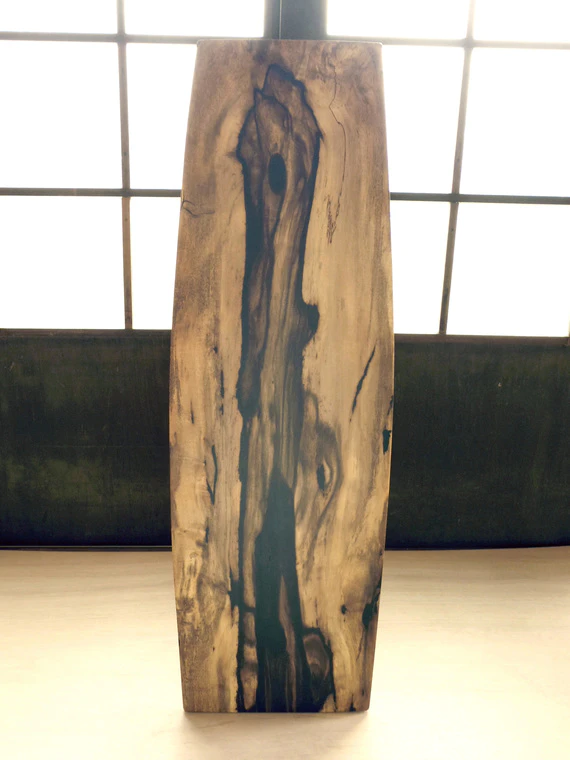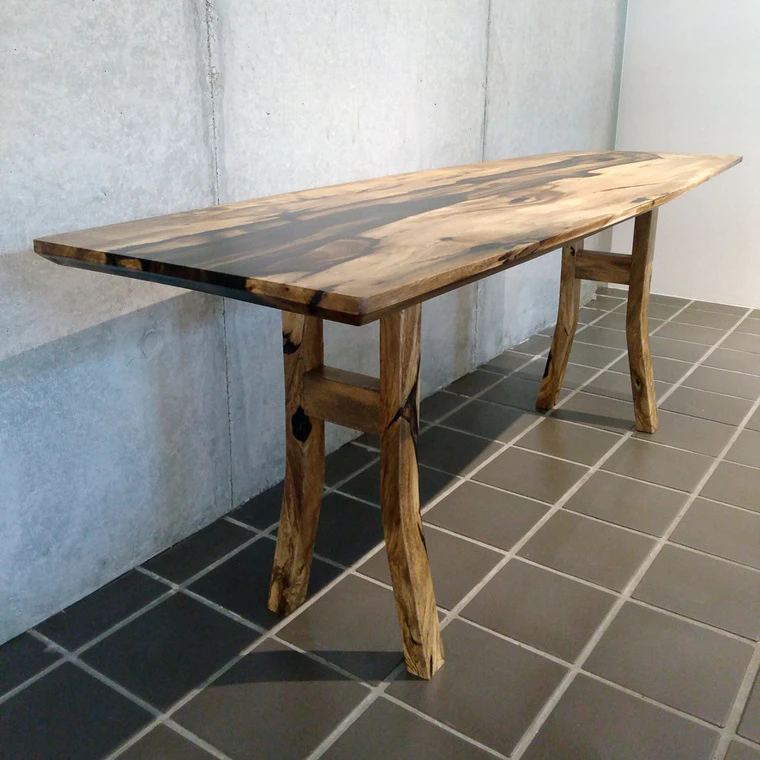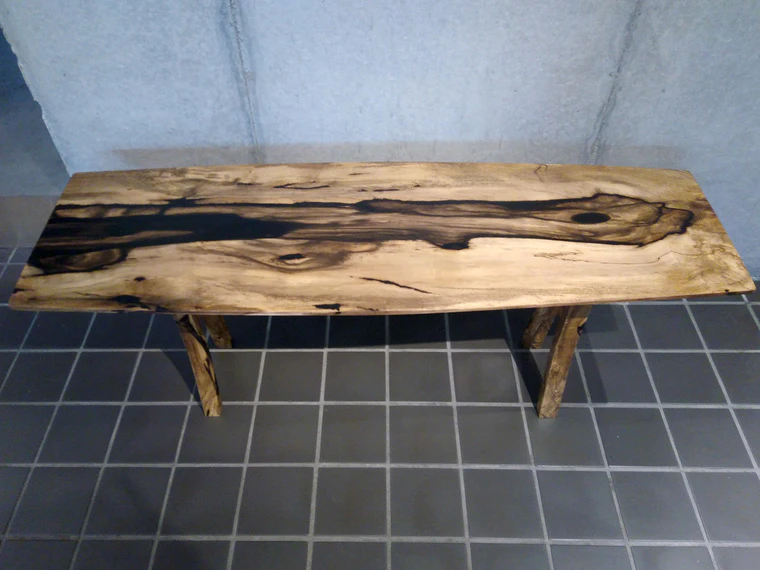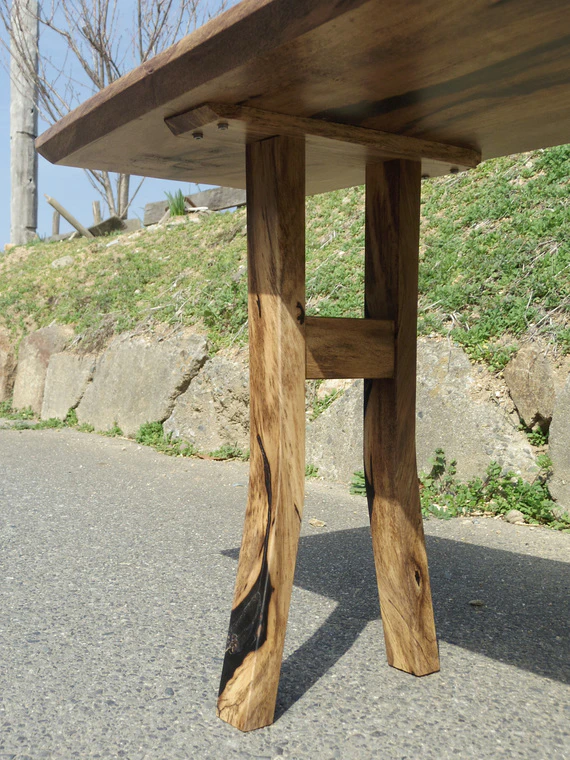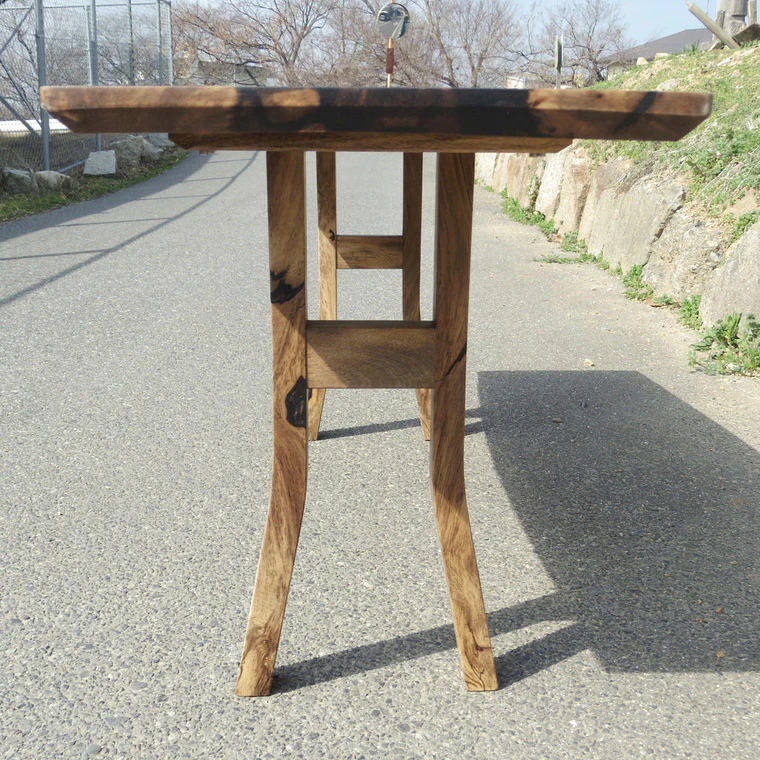Japanese persimmon table
H 49 x W 126 x D 36.5 cm,Year.2018Katsuyuki Okada
1943 -- Wood and Bamboo
- Price Range Please Inquire
About the Artwork
Old persimmon wood with rare black patterns are called "black persimmon".
There are no black persimmon trees, but we call the persimmon wood with black patterns "black persimmon". There are various theories on why such black patterns appear, but nobody knows the exact reason.
Generally, as Japanese trees grow slower than western trees, it takes several years for a tree, big enough to make a table, grow. Black persimmon is especially rare, so the number of black persimmon single boards are scarce.
Black persimmon wood is not only rare, but the patterns that look like black ink have a mysterious charm.
In the photo, this table has a strong impact, but actually, the color is slightly pale like thin black ink. The other parts are whitish with not much redness, so if you gaze at it for a while, it starts looking like a real ink painting.
I designed the legs to spread towards the floor, which is not very common for a table. It is a simple design. I used metal fittings for the attachments, but I did not use any nails.
The legs are attached with nuts and bolts and can be removed easily. As I didn't use any nails, the legs will not become wobbly.
As the table is not so high and the tabletop is not so thick, this is rather like a side table, but it will change the image of your room.
Description
-
CategoryWood and Bamboo
-
MaterialsBlack persimmon wood
-
DimensionsH 49 x W 126 x D 36.5 cm
-
Year presented2018
-
Paulownia BoxIncluded
-
InstructionsAs a transparent coating is applied, this table is waterproof.
However, please avoid sudden heat (placing under the heater, near a hot kettle or iron kettle etc.) or use of sharp blades, hammers etc. as this may cause damage to the wooden body. Please also avoid nail polish and other chemicals as this may cause the coating to peel off.
Please be aware that wood expands and shrinks depending on where it is used as it absorbs and releases moisture even after being processed. For example, even by moving the table among nearby regions in western Japan, a distortion may occur as the humidity is different.
The distortion is very small, but this may cause a slight defect.
Please be aware of this as it is the nature of wood.
Please feel free to contact me if you have any questions.
Techniques Used
Wood joinery
In wood joinery (sashimono), wood boards are cut into panels with care to how the grain patterns will fit together in the final piece. The wooden panels are then cut or carved to create interlocking joints. These joints, which are the key feature of wood joinery, make it possible to connect boards at right angles to produce boxes and other articles. Wood joinery is assembled without the use of nails or any other metal hardware.
Please feel free to contact us to commission work, check artworks available for purchase etc.

